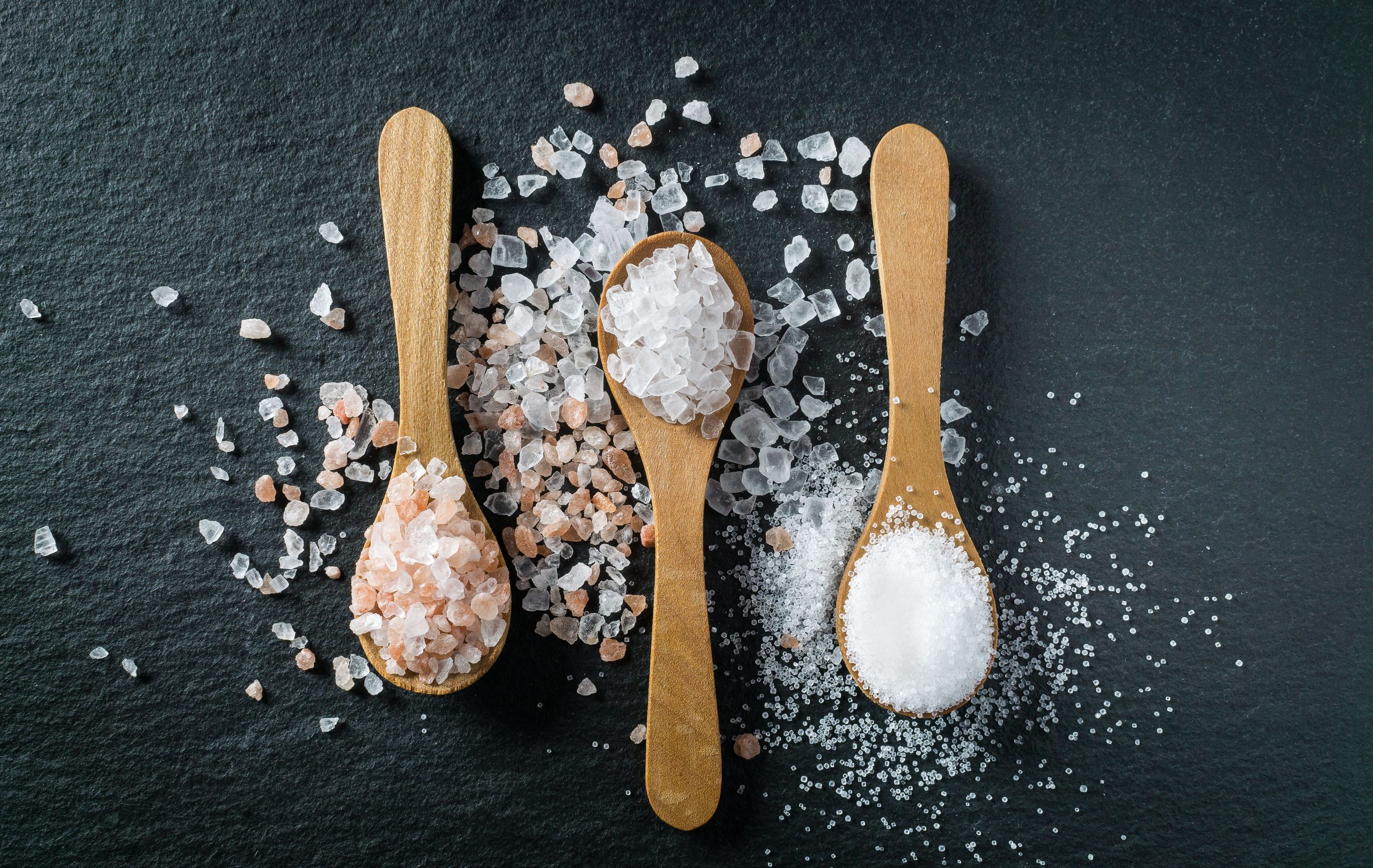Salt is one of the most utilized kitchen ingredients in the whole world. With its multiple uses, salt also comes in multiple types. Knowing and differentiating them is crucial for your health.
Doctors, nutritionists, and dieticians have occasionally pointed out that consuming salt in a reduced amount is wise. I bet you have heard health practitioners associating salt with various health problems, including hypertension, cerebrovascular accident, or death. The regular table salt that you usually consume can have negative effects on health. However, that does not mean that you shouldn’t use it. I will give you a million-dollar assurance that consuming this crystalline stuff is not evil. But it is good to know well the type of salt and its specific use. This article will sink into that.
What Is Salt?
Researchers have carried out multiple studies on salt for several years. They have found that salt exists in different types. But before you go into that, it will be better to have a good understanding of what salt is. Salt is a mineral in crystalline form and is primarily made up of two elements: sodium (Na) and chlorine (Cl). These minerals make salt so essential that life cannot carry on without it. In other words, salt performs critical functions in the body. These include fluid (water) balance in and outside the cell, nutrient transportation into and out of the cells, maintaining brain function, helping in the conduction of electrical impulses along the nerves, sustaining digestion, and controlling blood pressure.
Types of Salt
In groceries, you will, or let me say, have come across different salts. Maybe you noticed this because of their varied colors, texture, or taste. Salts also differ in terms of nutrition value. Keep reading to see the difference.
Refined Salt
Refined salt is typically white. This type of salt fills most kitchens—also referred to as regular table salt or cooking salt. I’ll be honest with you, anything that bears the seven-letter word “refined” should automatically raise the red flags. This means that the product has been altered from its original and natural state to bearing some added ingredients. Refined table salt has been stripped of its natural minerals via a chemical process. Manufacturers add ferrocyanide and aluminosilicate, which are anticaking agents. These agents have negative effects on your health.
Refined salt contains iodine, which is added to it during refining. Lack or inadequate intake of iodine can lead to thyroid problems and goiter. So, by taking refined iodized table salt, you increase your iodine intake. However, you need to consume this type of salt in moderation, as doing otherwise will increase your risk of hypertension and renal disease.
Sea Salt
Sea salt has considerably larger flakes and crystals than regular table salt. It is typically made by evaporating seawater. Just like table salt, sea salt is largely made up of sodium and chlorine. However, it may also contain some trace minerals like iron, potassium, and zinc, depending on where it was sourced. Sea salt has a characteristic dark color. The darker it is, the higher the number of trace minerals and impurities. It is worth noting that sea salt may also be contaminated with mercury and lead, the dangerous heavy metals.
Additionally, microplastics may also be contained in sea salt. These are microscopic residues of plastic waste. Some studies purport that microplastics may impose some health risk on an individual. Therefore, due to these contents of heavy metals and microplastics, consuming sea salt may not be that perfect for you.
Himalayan Pink Salt
As the name suggests, this salt is mined from the Khewra Salt Mine in Himalaya, Pakistan. It has several uses, including office decoration. Its health benefits precede it, from reducing anxiety and promoting sleep to treating respiratory infections. This type of salt has a pink color which it gets from its content of iron oxide – the main trace mineral in it. Similarly, other minerals such as potassium, calcium, magnesium, and iron are also present in Himalayan Pink Salt, but small amounts. Unlike other types of salt, Himalayan Pink Salt has very small amounts of sodium.
Many people consider Himalayan Pink Salt is the purest of all types of salts as it has not been contaminated with pollutants. Doctors highly recommend its consumption. It can support the absorption of nutrients, promote the elimination of wastes, balance and maintain electrolytes, and maintain your body’s pH.
Kosher Salt
From its name, Kosher salt is primarily used in the process of koshering. This is a traditional Jewish religious method of removing blood from the meat’s surface. Kosher salt has one thing in common with refined salt: they are both mined from underground deposits or seawater. However, their texture and grains differ greatly. Kosher salt is coarse to touch and has large flakes. Kosher salt also lacks iodine and anticaking agents.
Celtic Salt
Again, this is another salt that derives its name from the source. It is produced in Brittany, a city in France near the Celtic Sea. It has a characteristic gray color. What makes this salt different from the others is how it retains its moisture. Even when stored in dry condition, it will still be moist to touch. It has nearly the same nutritional content as that of Himalayan Pink Salt. Its content of sodium is slightly lower than that of regular table salt. This type of salt has the highest content of calcium and magnesium. Celtic salt also has amazing health benefits, same as those of Himalayan Pink Salt.
Conclusion
Salt is the main flavoring ingredient nearly in every food. Salt is mainly composed of sodium and chlorine. Depending on where it has been mined, salt may contain high or low trace minerals like magnesium, calcium, iron, and zinc. The main functions of salt in the body are maintaining electrolyte balance, regulating water, and regulating blood pressure. The different types of salt include Celtic salt, Pink Himalayan Salt, Kosher salt, Sea salt, and refined table salt. They all come in varied colors, textures, and nutritional values.
- Our Big Kitchen’ (OBK) is a non-profit organization located in Sydney, Australia - April 10, 2023
- Duos CBD, a hemp product E-commerce website - April 10, 2023
- SOFA SPOONING SEX POSITION - April 7, 2023









